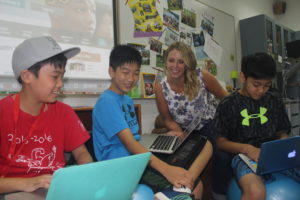This post originally appeared on Choices.Scholastic.com
In the old-school method of health education, we were taught that alcohol use was mostly caused by peer pressure, and I grew up envisioning high school as some sort of giant John Hughes party where everyone would be forcing me to drink alcohol if I wanted to be cool.
But that wasn’t the reality. I mean, there were parties and there was alcohol, but different kids drank for different reasons and peer pressure was only one of them.
In the last few months, there have been some interesting new studies and articles about additional factors that influence teen drinking. For teachers looking to update their alcohol prevention and switch to a skills-based model, these resources could be a great place to start.
National Health Education Standard 2- Students will analyze the influence of family, peers, culture, media, technology and other factors on health behaviors.
1. Family
In a recent study by the Journal of Studies on Alcohol and Drugs, they found that when kids were offered a sip of alcohol before middle school, they were more likely to have a full drink by ninth grade and four times more likely to binge drink in high school.
Now, the numbers are still low and we wouldn’t want parents who have already let their children try a sip of alcohol to panic, but I think it’s an important study to look at. What’s interesting is that most of the kids who participated in the study were given the alcohol by a parent at a party or at a special occasion.
It’s most likely that it wasn’t the taste that triggered the desire for more alcohol in these kids, but rather, growing up in an environment where alcohol was regularly used by parents in a party-type setting. Associating alcohol with celebrations and happy times was much more likely to have influenced them to drink.
2. Peers
When I teach my students about peer pressure, in addition to learning about refusal skills, I like to put a positive spin on things. Surround yourself with awesome people who are following their dreams, and you’re much less likely to drink or use drugs.
For a great example of positive peer pressure, check out the advocacy group Natural High.

3. Culture
As a teacher from a school with a multicultural population, this is a great area of interest for me. My students come from different countries with different laws and very different attitudes about alcohol use. How does this influence their personal thoughts on drinking?
In a fascinating report from USC, Steve Fan—a Korean American—writes of his experience growing up, and why we need to protect Korean youth from a “culture of drinking.”
From a very young age, Korean boys are exposed to high levels of alcohol use that is not only widely accepted among teens, but often encouraged by their parents. He writes about how easy it is for teens to buy alcohol in areas with high immigrant populations, and how parent education is key in preventing abuse or dependence down the road.
While he writes of counseling mostly Korean and Latino parents in his youth center, this is an important read for all adults working with teens from any background.
And for further learning, you could have students do some research on alcohol in different cultures, reporting on how it’s used in cultural situations and how problem-drinking is viewed and handled.
4. Media
This article from CBS News features a study from the Journal of Pediatrics that looks at how the amount of alcohol teenagers see in movies will factor into whether or not they are going to drink.
The study authors recommend including a pediatrician and child psychologist on the board that determines movie ratings and suggests that they should be content-based, rather than age-based to help parents make a more informed decision.
For a great website that actually does use a panel of experts to rate media based on content, check out CommonSenseMedia.org. It’s a valuable resource to parents and teachers alike.
5. Technology
This is an interesting one, and although many will say that social media and fear of missing out are causing teens to drink even more, I actually think it’s one of the reasons we’ve seen a significant drop in teen alcohol and drug use over the last 10 years.
Kids are using social media to follow their passions, find people to connect with, and fill their lives with things besides drugs and alcohol. They also realize that getting drunk makes you do stupid things, and thanks to technology, we now live in an age where everything can be recorded… and that has to have a huge influence too.
For more of the latest on teenagers and alcohol, check out “One Deadly Night” from the April 2017 issue of Choices.




